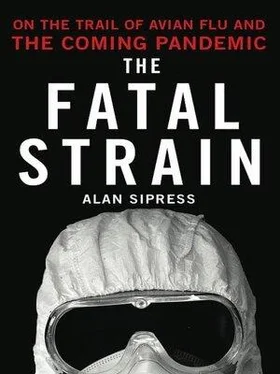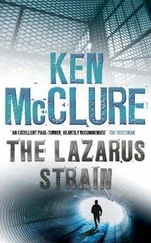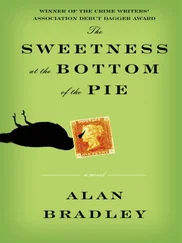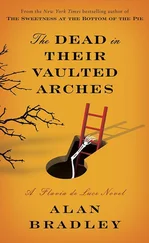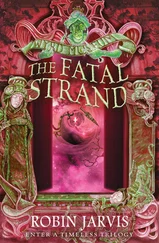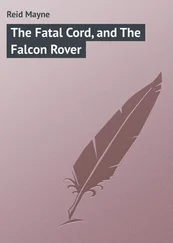After a long wait for sunrise, she contacted researchers at Hong Kong University. They had begun sampling poultry in the city’s markets just before Christmas. Most of the test results had yet to come back. Chan urged them to take as many specimens as possible and to hurry up. She was about to recommend drastic action but didn’t yet have the scientific evidence to support it. “When you are ahead of the curve in dealing with new and emerging infections, science is always lagging behind,” she later explained. But despite the uncertainty, she wouldn’t wait. “Don’t be afraid to make major decisions,” she told herself. “Don’t be afraid to be wrong.”
Chan spoke that morning with her boss, Chief Secretary Anson Chan, who ran the Hong Kong administration. They scheduled an emergency meeting for later in the day. As health director, Chan would tell her that all the chickens in Hong Kong had to go. But there was no guarantee the city’s political leaders would sanction such a costly measure. “I am prepared, if they don’t accept that, to resign,” she thought. “I will resign, because if the environment does not allow me to do my job to protect the people, then that is the proper action to take.”
Chan’s driver ferried her up to the Peak, the highest point on Hong Kong island and home to a white colonial villa called Victoria House. Once a taipan’s summer retreat, it was now the official residence of the chief secretary.
Chan and agriculture director Lessie Wei briefed the chief secretary on the latest poultry outbreaks. Hong Kong had already closed its borders to imports from China, yet the poultry infections persisted. If the disease continued to circulate among birds, Chan explained, the public health threat would mount, especially if the virus mutated or reassorted. That’s why all 1.2 million chickens in Hong Kong had to be culled. About three hundred thousand ducks and geese that were kept in close contact with the chickens would also have to go.
The chief secretary cautioned that the economic implications were huge. A mass slaughter could severely harm the livelihoods of countless chicken farmers and traders.
“People will not like it,” Chan admitted, “especially when it affects their vested interests.”
The chief secretary continued to press. The poultry sector would demand the government pay compensation. The bill could be tremendous.
“Yes, it’s going to cost money,” Chan agreed.
“What if we don’t solve the problem after killing all of the chickens?” the chief secretary asked.
“Then we need to go after all the ducks and geese,” Chan said.
“And what if we still don’t solve the problem again?”
“I’ll be accountable,” Chan answered. If she needlessly put Hong Kong through the trauma of a mass slaughter, she’d accept the consequences. “I’ll deliver my head on a platter. I’ll resign.”
Finally, the chief secretary accepted Chan’s recommendation. She agreed to take it to Hong Kong’s leader, Chief Executive Tung Chee-hwa.
Within hours, Chan announced that Hong Kong would kill every last chicken. The slaughter would start the following afternoon. They were all to be gone within a day.
From the start, it was clear the slaughter would not go as planned. The government pressed 2,200 public employees into the operation, giving them masks, canisters of carbon dioxide, and orders to gas the birds to death. But these were dogcatchers, park rangers, and other civil servants with no experience in killing birds and unsure even where to find all of Hong Kong’s farms. Day laborers were hired as reinforcements, and even some market traders joined the effort, slitting the throats and snapping the necks of their birds. The result was literally bloody chaos. The chickens clawed and scratched and scampered for safety. Flies swarmed. Farmers resisted. By the end of the first day, less than a fifth of the chickens targeted had been slaughtered, and many of those remained unburied. Television showed plastic garbage bags of carcasses heaped high while stray animals and vermin scavenged through the carnage, spreading fear of contagion. Nearly a week into the slaughter, fugitive chickens still roamed the streets.
Many traders and laborers in the city’s nearly one thousand poultry markets were incensed. On the third day of the slaughter, New Year’s Eve, Chan accompanied Chief Executive Tung to the Cheung Sha Wan wholesale market, an expanse of weathered stalls with rusting corrugated metal roofs in an old industrial quarter of Kowloon. They walked through the parking lot, crowded most other mornings with small trucks heavy with poultry, and toured sheds crammed with wood and bamboo cages, now empty but still caked with droppings. The chickens had gone silent. Instead about two hundred market employees confronted the officials, shouting objections and waving placards with slogans scrawled in red paint.
The South China Morning Post , Hong Kong’s leading English newspaper, captured the prevailing public skepticism. In a front-page editorial, the paper asked whether the mass slaughter would eradicate the bird flu virus and allow poultry sales to recover. “There must be serious doubts whether either of these aims will be quickly achieved, if only because the central question surrounding the spread of bird flu has still not been answered: where does it come from? Until we know the answer, the killing of a million birds cannot hope to quell the public’s understandable fears. And, more importantly, nor can it be certain to stop any more cases of bird-to-human transmission of the deadly H5N1 virus.” A week later, this skepticism turned to harsh criticism over what the Post labeled the “botched” operation. “What is amazing is that the Government should have embarked on this task without any accurate estimate of its scale or duration,” the newspaper editorialized. “Equally astonishing is that it should have bungled matters so badly as to raise the possibility that other animals may have become infected.”
Yet even as the Post published those words, the final chickens were meeting their fate, and Chan was starting to find her vindication. The researchers at Hong Kong University had finished sampling nearly 350 chickens at markets around the city. They discovered the disease was even more widespread than expected. One of every five chickens had been infected.
Chan had accurately identified the source of the crisis. But had she found the solution?
Reporters asked Chan shortly after she announced the slaughter how she would know if it was a success. Chan told them it would have to put a complete stop to human cases. The normal incubation period for flu was a week. To be confident, Hong Kong would wait twice as long. If there were no more cases by the end of the second week of January, she would declare victory.
Just two days into the waiting period, Chan received a report of a new case, a three-year-old boy. “Son of a gun,” she thought. “What is going on?” Chan was scared. But when she reviewed the boy’s history with her staff, they concluded he had likely been infected just before the mass cull began. For two weeks the newspapers counted down the days and the population held its breath. On the final day, two new cases were announced. But these victims, too, had fallen ill before the slaughter.
There were to be no more. The final count stood at eighteen. Of those, six had died. Hong Kong would be the source of no new human infections, not that year and not for the next decade. The city had banished a killer.
Researchers later concluded a pandemic had been averted. This took an unprecedented effort that marshaled some of the world’s leading disease specialists and courageous investigators. It required exhausting lab work in Hong Kong and Atlanta, tapping some of the most sophisticated techniques then available to medical science.
Читать дальше
